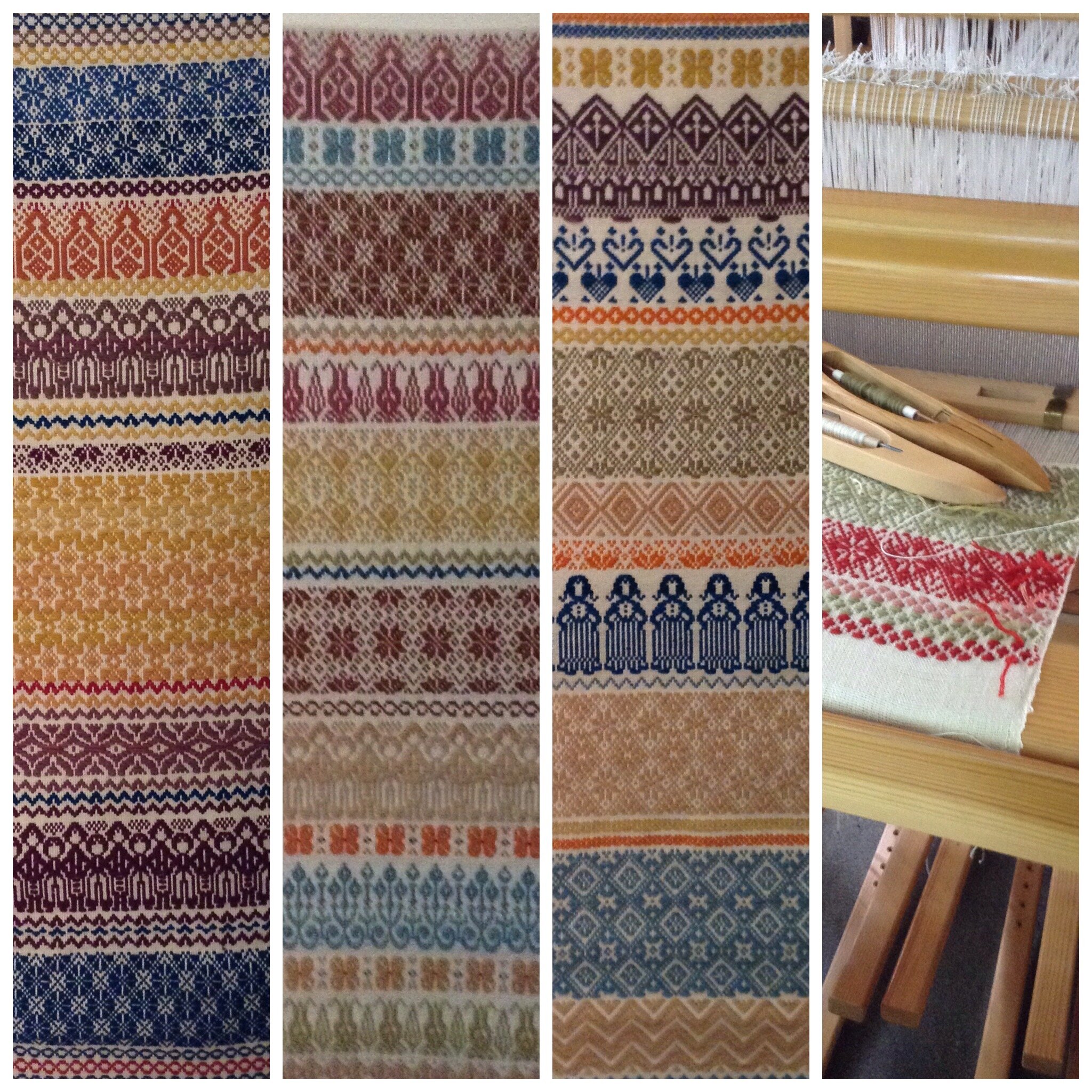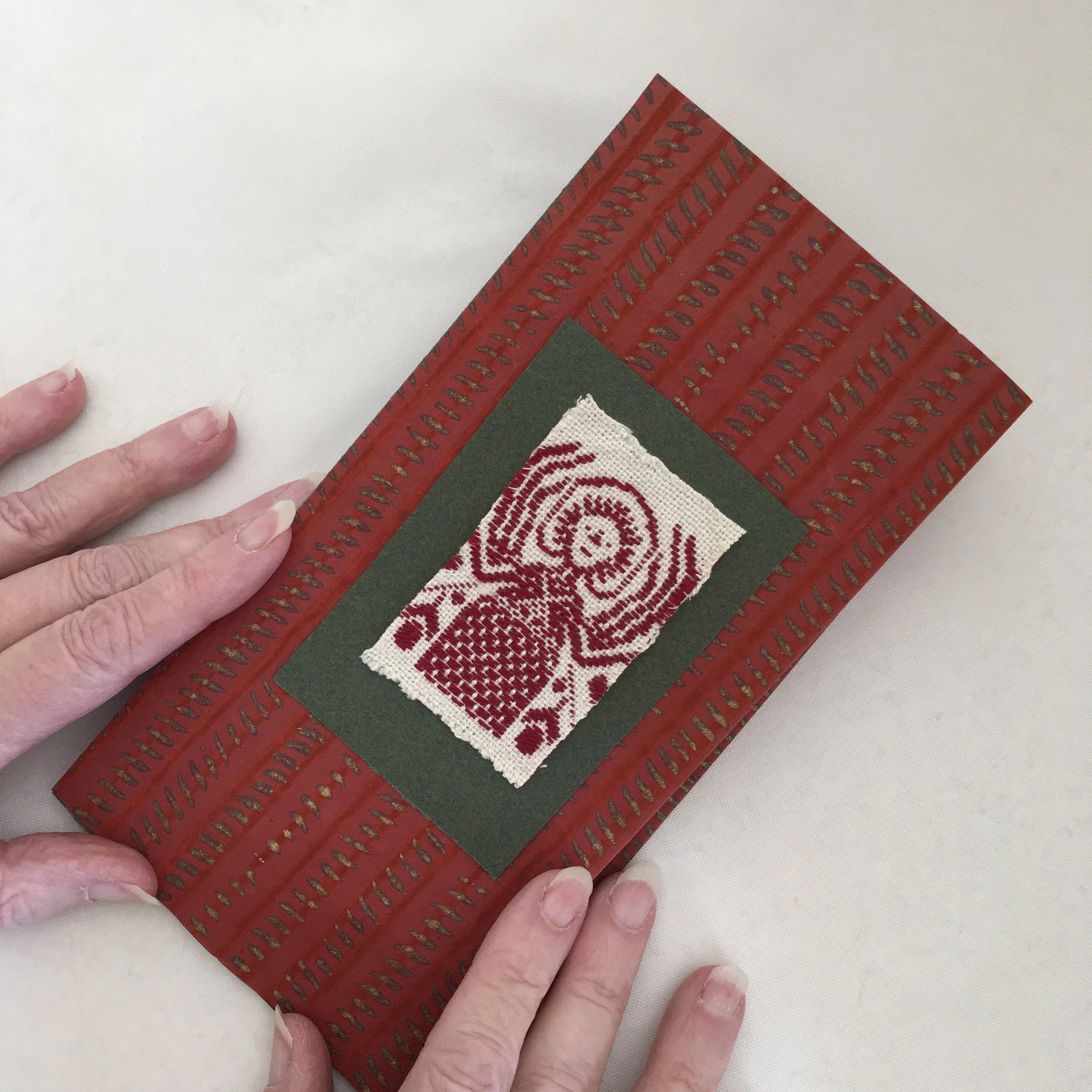Bits and Pieces

Patchwork Weaving Memories
Most weavers I know have at least a few 3 ring binders holding a few (or many) sheet protectors, each one filled with one or more handwoven swatches mounted on a page containing a technical description describing how it was woven.
Sometimes, the technical description is beautifully detailed like this one. Others are a little sketchier. All of them teach us something, even (or maybe especially) those that went wrong.
The longer you have been weaving, the larger is your collection of these books.
The practice of keeping these records actually pre-dates three ring binders and sheet protectors—by a few centuries, as illustrated by this page from an old Scandinavian weaving manuscript that I found on eBay 10 or 15 years ago.
It is difficult to say just how old it is, perhaps 150 years or more. But it is surely from a time when materials like paper and threads were far more precious: Several drafts have been crowded onto each page and the pages them selves are only about 6” by 8”. The two little swatches, sewn onto their respective drafts are exquisitely tiny; one is about 1/4” by 1/2” and the other 3/4” by 1 1/4”. The threads are quite fine and appear to be handspun linen, some bleached white, some dyed with woad or indigo for blue, madder for red.
The manuscript is very old and quite fragile, but you can easily see that my sample collections are its direct descendants.
Some weavers hate weaving samples; they want to dive right in and weave a specific item: a blanket, a set of table linens, fabric for a garment or a gift. I understand that point of view, especially as good weaving yarns can be quite expensive. For these folks, there are lots of excellent weaving project plans available that have already been designed and tested. Using them, you can easily produce beautiful work without worrying about waste. You can also add personal touches by changing the color way or dimensions or other attributes that can be tinkered with, without actually messing about with the basic specifications.
Other weavers (like me) love weaving samples; we want to understand the materials, the techniques and the processes that produce a particular kind of textile. We want to understand what happens when you combine certain kinds of threads in different weave structures at different setts and weft densities. We play around with as many variables as we can think up that can be modified by the weaving and finishing processes. Sometimes these experiments lead to actual practical pieces of weaving; sometimes the samples themselves are the end product of the process. Sometimes, once we’ve proved to ourselves that a thing can be done, we are happy to move on to the next experiment.
I live not far from the Delaware River and in recent years, a couple of “weather events” resulted in ankle deep water in our basement. One of the casualties of the floods was a large box of my sample books. As I went through them, I could see that most of the descriptive information was unsalvageable. But even so, going through each notebook was a pleasurable trip down memory lane. I started pulling the swatches of the ruined pages and then saving them to one side.
Now that I had all of the swatches from the water-damaged books, I kept going, “liberating” all of my collected samples. They have served their original purpose well and I no longer have need of them. But I can’t bear to just discard them, so I set out to find ways to disperse them.
Some of them ended up on handmade books, either as a cover embellishment as here, or as the content, like Marjie’s Angels. (See the preceding post.) Many more are being turned into little zipper bags that will show up at my guild’s annual show and sale next month. See hwbcguild.org for more details.
If you live in or around Bucks County, PA, I hope you can stop by the weekend before Thanksgiving!








